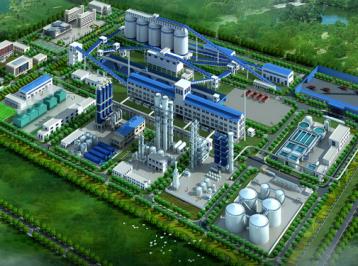February 16, 2014 – Today China produces 70% of the electricity it uses from coal, burning 47% of all the coal mined globally each year. Why? Because it continues to grow its economy at hyper warp speeds. It does this to absorb its huge labour force and to raise the economic standard of living for its people. If it didn’t then China’s rising unemployed would put enormous pressure on the state and potentially overthrow the rule of the Communist Party.
The end result of all this coal production is what we see in China’s major cities today – coal and transportation-derived smog that is leading to more than 1.2 million deaths in China annually. It would seem that China’s government is in a no win situation. But the Communist Party policy makers are hell bent on continuing to grow the economy and to do this they need the energy they get from coal. So what to do?
In decisions that run counter to efforts to implement carbon taxes and a reduction of the country’s carbon footprint, policies that China has recently announced, the country is building a synthetic fuel infrastructure based on converting coal to synfuels.
China isn’t the first country to build coal to synfuel plants. Germany was the first beginning in the 1920s and accelerating with the ascension of the Nazis in the 1930s. The Germans gave the technology to the Japanese who were allies during the Second World War. Similarly, an isolated apartheid South Africa relied heavily on synthetic fuel production from coal. The conversion technology in both these cases is called the Fischer-Tropsch process. Since then a number of different coal liquefaction technologies have emerged.
It is interesting that when you go to the World Coal Association and read about coal conversion there is little discussion about its carbon footprint. Instead you are sold on coal liquefaction’s many benefits including:
- Its affordability because coal is the most widely available fossil fuel whereas conventional oil is a far more finite resource.
- Coal-based fuels contain no sulphur, are low in nitrogen oxides, and in particulate matter.
- Coal converted to cooking fuels is much cleaner than conventional kerosene and therefore less of a health risk when used for cooking indoors.
The advocates for coal conversion even attempt to argue that as a fuel source synfuels produce as little as one-fifth of the greenhouse gas (GHG) emissions of conventional oil. There are, however, conditions to that statement. First there is an acknowledgement that coal conversion is energy intensive producing more CO2 than conventional oil refineries. But the advocates go on to state that carbon capture and sequestration (CCS) can mitigate emissions and describe it as a low cost solution to the problem. If you are a regular reader of this blog you may have trouble believing in the accuracy of that last statement since sequestration projects have turned out to be anything but low cost.
And herein lies the problem with China’s plans. In the effort to clean up pollution in the major cities, the government is building an enormous number of coal conversion plants and erecting them in remote parts of the country. Currently 16 are under construction or already operational.
Climate scientists believe that GHGs from these plants which resemble the largest oil refinery complexes you have ever seen will add 10 billion tons of CO2 annually to the atmosphere. China hopes by 2020 to have CCS technology in place to mitigate 10-20 million tons of that CO2 annually. But that will only lessen emissions from these new plants by a fraction of their total output pushing GHGs to new high levels.
A consequence of building these plants, an illustration depicting one planned for Mongolia below, within China is the forced migration of the local population to newly built urban communities within China. All in all this is a massive experiment for both China’s energy sector as well as its indigent population. The cities of China’s coastal plain may be the beneficiaries in the short term, but the planet over all will suffer because the emissions from coal conversion will increasingly contribute to atmospheric warming.
To learn more about China’s expanding coal conversion plans and synthetic fuel from coal technologies check out the additional links provided below.













